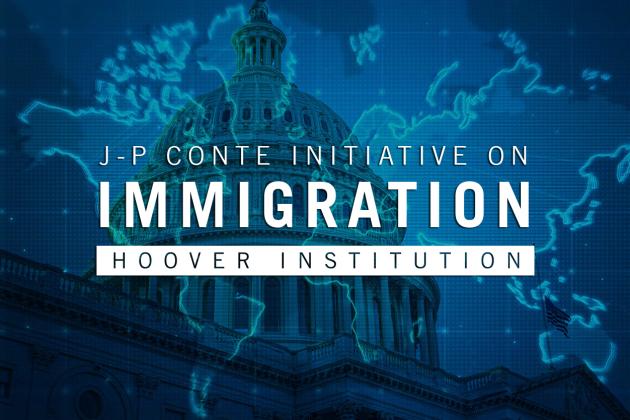PARTICIPANTS
Emily Oster, Daniel Bjorkegren, Matilde Bombardini, Michael Bordo, Michael Boskin, Kate Bundorf, Elizabeth Caucutt, John Cochrane, John Cogan, Mark Duggan, Vick Fuchs, Bob Hall, Rick Hanushek, Dan Kessler, Anjini Koshar, Mark Koyama, Ed Lazear, Lee Lockwood, Josh Rauh, Doug Rivers, Gopi Shah Goda, Martin Schmalz, Kathryn Shaw, George Shultz, Peidong Sun, John Taylor, Francesco Trebbi.
ISSUES DISCUSSED
Emily Oster, Professor of Economics at Brown University, addressed the policy lunch group, sharing with us a project underway studying health behaviors. She discussed "Changes in Household Diet: Determinants and Predictability.”
Diet—obesity and metabolic disease—is a big problem. Bad diets lead to very expensive medical conditions. How can we get people to eat better?
The government spends a lot trying. For example in 2017 SNAP (food stamps) spent $415 million on nutrition education. WIC, school lunches and other programs spend more. The food pyramid, now the plate, consumed a lot of federal dollars.
All of these approaches presume that if you just tell people to change they will change; that people lack information on a good diet.
There is lots of evidence however that diet is not very malleable, not just an information problem. People’s tastes are determined early and are remarkably persistent. For example David Atkin at MIT showed that when people who grew up in places in India that grow rice, move to a different location where rice is expensive but wheat is cheap, they will give up a lot of calories and even face malnutrition to eat rice instead.
Oster’s later research program is to look for things that can actually prompt changes in diet.
For her paper, she uses data from the Nielsen Homescan Panel. Unlike most diet studies, this follows households over a long period of time, and passively records their choices, not relying on diaries. Households promise to scan everything they buy at a grocery store, and the data stores the UPC code of what they buy. Households are usually in the panel for 4 years.
She uses three measures of diet quality 1) the share of calories from “not good” foods, such as soda, sugar, cookies, candy. 2) the share of “good” foods such as fruits vegetables whole grains and 3) nutrient ratios.
The data includes where people live, zip code, age, family composition, employment. She merges this data with some disease information, such as whether a person is diagnosed with metabolic disease.
Kathryn Shaw asked how the paper relates to Rebecca Diamond’s recent work, on the effects of stores moving in and out, and people moving to new places nearer or further from grocery stores. Diamond found essentially no effect—when people move nearer to better grocery stores, they stick to bad choices. Emily responded that it is the same data set, and asking different questions.
Mark Duggan asked if there is a round number on the payoff of eating healthy? For example, we know that smoking one pack of cigarettes per day from age 18 costs about 7 years of life. A discussion followed, though in the end we don’t have such a good number for the effects of obesity on mortality. A discussion followed over medical costs and quality of life short of mortality. Eating is not the most straightforward thing to measure either.
Oster analyzed the data in two ways: First, she looked for events like diagnoses and saw if people changed diet on average after such events. Second, she looked at people who did make big changes in diet and saw what other events occurred around that time. For the first question, she merged Nielsen data with diagnoses. When people are diagnosed with hypertension or obesity, there is no visible change in diet. A diagnosis of diabetes does lead to a reduction in bad food share. The reduction is small, only about 2%. (Martin Schmalz observed however that if only one person is diagnosed, then one might multiply this by the number in the family to see how that person’s diet changed). There was much speculation about how diabetes is different. In particular, the doctor’s instructions are usually simple and specific, i.e. “don’t eat sugar” not “eat better.” There is very little heterogeneity by education income or other variables in this effect. More educated people do not change more. (More educated people do start from a healthier diet baseline however).
In figures 2 of the slides we also see that the federal government’s pie plate exercise and the widely reported Mediterranean diet research findings had no measurable effect. (Oster reported that olive and olive oil sales ticked up a tiny amount for the few weeks after the latter).
Rick Hanushek asked if a small number of people have big changes. “Glad you asked,” responded Oster as it brings up her second method—look at people who did make big changes, and see what happened.
She looked for people who made a sustained change over a 10-month period. In figure 3, these are the green lines, which are about 5% of data. Who are these people? Education and baseline diet helps a little, but not much in categorizing them.
To figure out, Oster tried machine learning, essentially a very large nonparametric regression with rules against overfitting designed to predict who makes big changes. Figure 4 shows the data can predict, but as usual, machine learning is not good at telling a story behind the predictions.
Figure 5 helps us to visualize dependencies. The greatest source of predictability she found is the nature of the existing diet. The more unhealthy people are eating, the more likely they are to be in this group of big changers. In panel B and C the more concentrated the diet is, the more likely to change. Someone who eats only cookies and sugared soda is the most likely to have a big change. Some of this is, of course, that people who already eat nothing but Kale can’t make such a big change.
Figure 7 includes interactions. People who both have a bad baseline and very concentrated diet, buying only a few things, are the most likely to change.
Mike Boskin asked whether food quantity rather than food share might be a better variable. The total amount of sugar in a large diet, not a very small half sugar diet, is a bigger problem. Otter responded that yes, but since households vary in their compliance with scanning, and there is a lot of food eaten outside the home not in the home, shares are more reliable.
Kathryn Shaw pointed out that information campaigns do seem to work in randomized trials in developing countries. For example, informing people that older men are more likely to have HIV has a big effect on younger women’s choice of partners, and birth control education campaigns have been successful. Oster and others answered that information in the US seems to have very little effect (figure 2). Perhaps in the US just about everyone knows high sugar and fat junk food is bad for you. And also people have learned to discount government ad campaigns, which have been so wrong in the past.
There was a general discussion that the magic bullet to get people to eat better was still missing. Some discussion came up on whether this is really the government’s proper role though at least we could stop subsidizing bad food and too much food.
- John Cochrane









